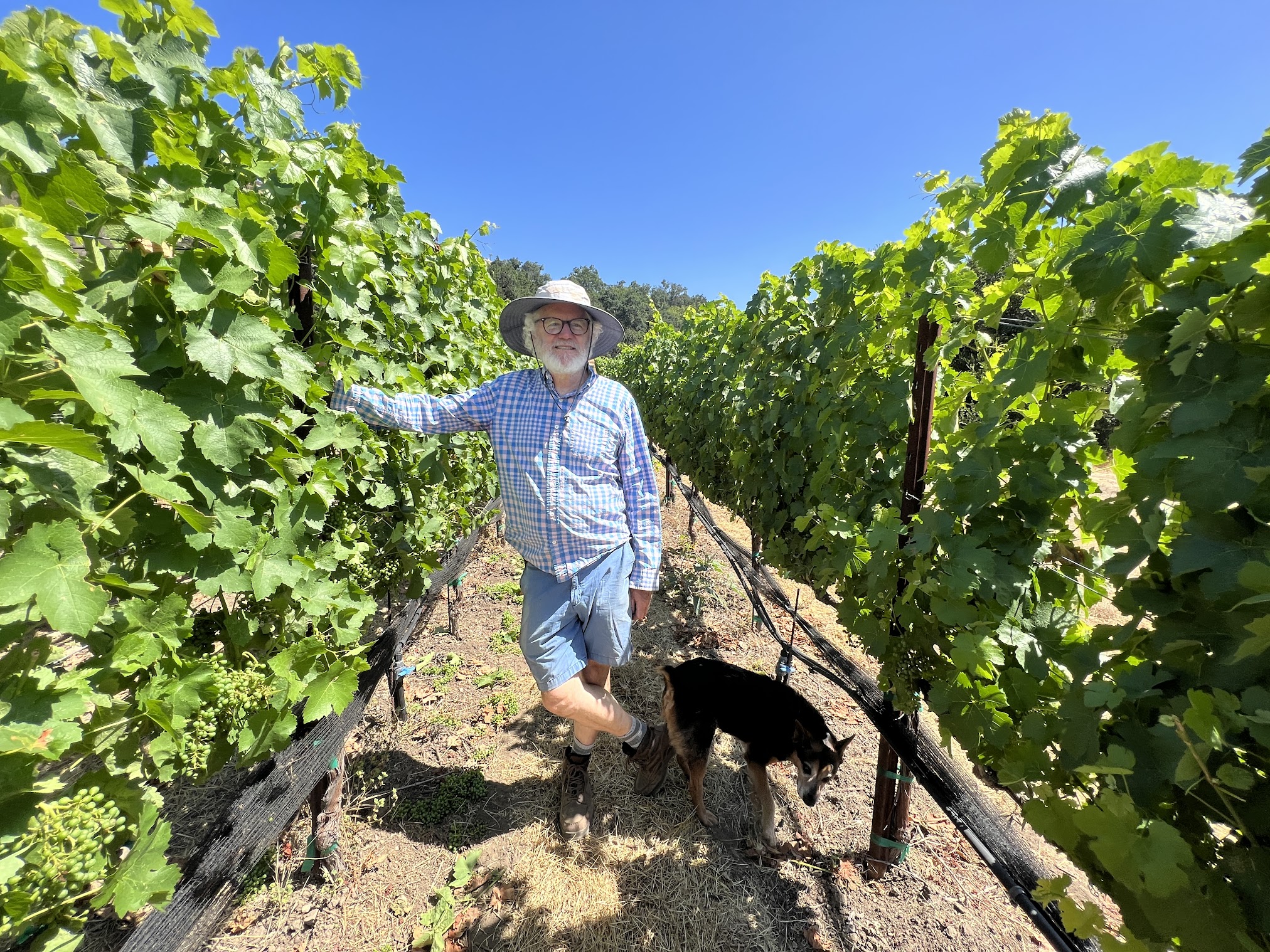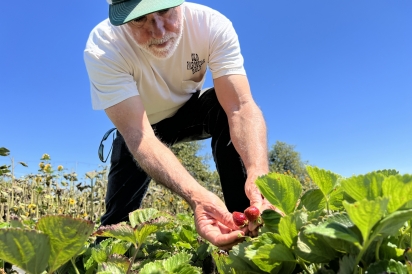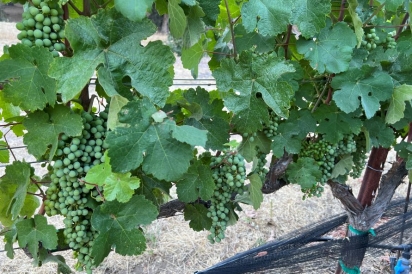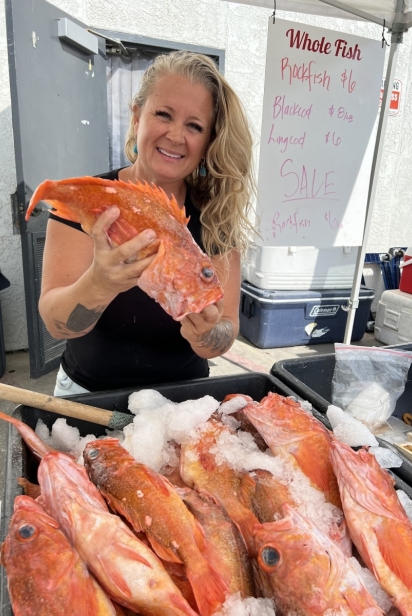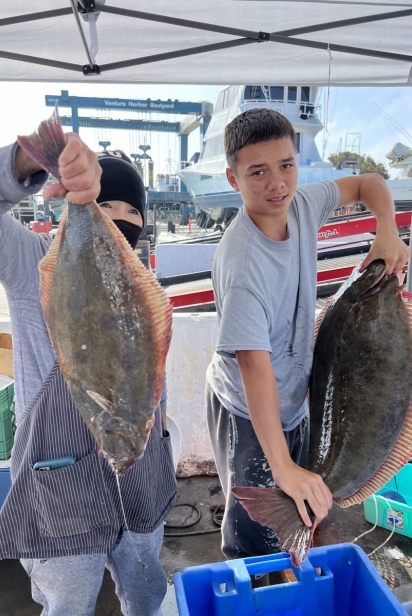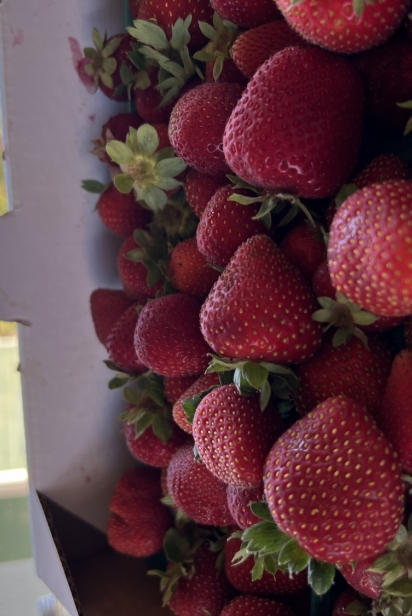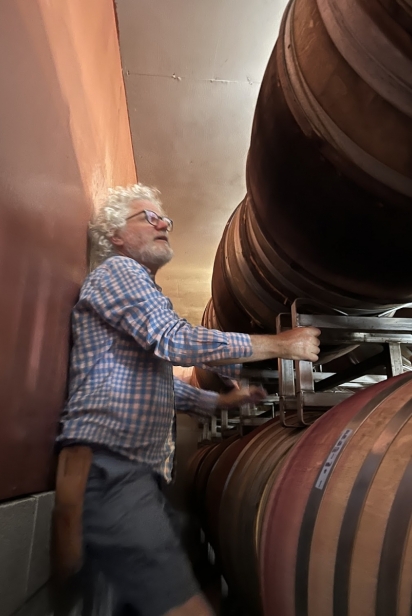Slow Food Movement Puts Pleasure at the Center of the Plate
“In the name of productivity, the ‘fast life’ has changed our lifestyle and now threatens our environment,” wrote Carlo Petrini in the Slow Food Manifesto. To those “who confuse efficiency with frenzy, we propose the vaccine of an adequate portion of sensual gourmandize pleasures, to be taken with slow and prolonged enjoyment.”
When plans were announced to locate a McDonald’s fast-food restaurant adjacent to the Spanish Steps in Rome in the 1980s, a protest demonstration led Petrini to write his Slow Food Manifesto and to the formation of Slow Food, an international movement in defense of pleasure—and leisure—at the dining table.
Slow Food advocates “a comprehensive approach to food that recognizes the strong connections between plate, planet, people, politics, and culture” and envisions a world where people access and enjoy food that’s good for them, good for those who grow it and good for the planet. Slow Food—like its partner Slow Wine—is defined by whether the product is good, clean and fair.
“Carlo Petrini’s mission has trickled down,” says Slow Food enthusiast Charles Barth. “Every meal you eat is visceral and temporary in nature. Every day is a chance to create a Slow Food event in your own home.”
Slow Food starts in the kitchen: “To escape the tediousness of ‘fast-food,’” wrote Petrini, “let us rediscover the rich varieties and aromas of local cuisines.” Local cuisine begins with local produce.
GOOD, CLEAN AND FAIR
Fifth-generation Ventura County farmer Phil McGrath has taken the lead in growing produce that is “good, clean and fair.” In 2006, the Los Angeles Slow Food Chapter sponsored him to attend Terra Madre Salone del Gusto, Slow Food’s flagship international festival held every other year in Turin, Italy, combining a marketplace with workshops, networking and music, and happening next Sept. 22–26, 2022.
“Slow Food is a mentality,” says McGrath. “I couldn’t ask for a better life.”
McGrath started out in “conventional” chemical-dependent agriculture, earning a bachelor of science degree in the subject from Cal Poly San Luis Obispo. After college, he traveled the world, and “that shaped how I look and think about the world” including learning the importance of keeping both sides in view.
When his customers wanted certified organic produce, “I got tired of saying ‘no sprays, no pesticides,’” McGrath says, so in 1995, he obtained organic certification for his farm.
“I will never look back, never go back to conventional farming,” he says, “I believe if we feed the soil, the soil will feed the plants.” He credits Slow Food for influencing him and teaching him about biodynamic practices and permaculture.
When McGrath first went organic on his farm, “the soil came alive and I mean it in every sense of the word. I saw a praying mantis in my field and he was eating other bugs; he was happy. I had never seen a praying mantis in any fields on the Oxnard Plain. It was a sign that we were in balance with nature.” Today McGrath is a statewide leader in regenerative farming—or, as he likes to think of it, successional farming, meaning farming in a way that considers successive generations. “It is what all my forefathers believed,” he says.
‘THE GIFT OF ORGANIC’
Another Ventura County leader in regenerative farming is Patagonia outdoor gear company founder Yvon Chouinard, who argues that one of the most important solutions to climate change is regenerative agriculture because it’s healthier for the planet and for people too. Patagonia started its Provisions division to enact greater change through agriculture.
According to Chouinard, we’re not getting the nutrients we need, even if the food is organic. With regenerative organic agriculture, foods have more nutrients and topsoil rebuilds. Research suggests large-scale farming this way helps fight climate change by restoring to the soil the carbon we’re releasing by burning fossil fuels.
Regenerative farming also uses less water, says Chouinard; the ground is alive and retains water better. “We’re going to run out of water before we run out of anything [else] on this planet.”
For McGrath, regenerative is a better word than organic or sustainable, because it indicates good stewardship. “Regenerative—that word can accomplish so much,” he says. He pointed out that growing conventionally on the Oxnard Plain for the last 70 years has been a contributor to depleting the aquifer.
“How we thought about water before has significantly changed. A regenerative farmer has to think of everything they’re doing. They have to be diversified. Bring in legumes, cover crops. You can’t just grow one thing. The more we keep this planet green, the better the soil, the better the planet.” That includes trading in his old polluting diesel tractor for a new electric one, the first one in the region.
“Phil McGrath is my farming mentor,” says Mike Roberts of Baby Root Farm in Camarillo. Dissatisfied with his career and lifestyle, including the food he was consuming, in 2010 Roberts landed at McGrath Farms. With McGrath’s retirement imminent and with potential downsizing of the farm, Roberts, “with Phil’s permission,” soon worked with longtime McGrath farmworkers to form a collective of five farms, each with its own team. He later partnered with Farmivore, an online ordering system for locally and sustainably grown produce, to provide the groceries needed to make Slow Food. “We aspire to be a transformative food source,” says Roberts.
“From our perspective, Phil gave us the gift of organic farming,” he says. “Organic is a springboard to environmentally regenerative farming—systems of agriculture that can improve the environment.”
CONNECTING PEOPLE WITH FARMERS
“Slow Food has changed my life and everything I do,” says Charles Barth. Slow Food principles have become a driving force in his business.
“I came to Slow Food because I was working for the State for the certified Farmers’ Market,” says Barth. “Slow Food events drew from what I learned.” Sources for meals came from local artisan producers. Unfortunately, COVID shut down events, and although people keep asking, none are scheduled. “The mission has been to connect people with their farmers,” so during COVID, Barth encouraged people to purchase produce at their local farmers’ market.
“Now that the pandemic is receding and the opportunity is opening up, we’re planning to reseed local events and bring this vibrant farming and artisan food community back together under the Slow Food banner,” says Barth.
SLOW FISH, TOO
Slow Food includes Slow Fish, and fishermen’s markets allow consumers to buy direct.
“I started out fishing,” says Kat Jones. “I saw a real disconnect between the community and the active fishing community. There was a missing connection of us as harvesters and my neighbors. People were intrigued that I was a fisherman. It was organic to change from fishing to selling to our community.” When she had children, “It was a natural and organic transition off the boat.” Jones loves seafood and learning from her customers how they prepare and enjoy what she sells to them.
Instead of harvesting for high volume, Jones harvests low volume with high quality, and she only sells very fresh fish. As a fisherman herself, she knows the cost of running a boat, and she is committed to charging a fair price. “There’s not a lot of women that do what we do,” says Jones. Another regular at the Ventura Harbor Fisherman’s Market is Linda Tran, “and she’s awesome. She’s always out there selling.”
AND, OF COURSE, SLOW WINE
And what pairs with Slow Food and Slow Fish? Slow Wine! At Slow Food events, Barth finds that “Slow Wine actively stimulates conversation.”
Finding Slow Wine is easy using the Slow Wine Guide USA 2022 published by Goff Books, which annually assists wine enthusiasts by identifying and critiquing wineries through the perspective of the Slow Food philosophy. It showcases winemakers using traditional low-intervention techniques, working with respect for the environment and growing grapes without synthetic herbicides, pesticides and fungicides. Slow Wine Guide began in Italy and expanded to include an edition for the United States that’s available in print and includes nearly 300 wineries in California, Oregon, Washington and New York.
Two Ventura County wineries are in the 2022 Slow Wine Guide: Casa Barranca and The Ojai Vineyard.
Bill Moses established Casa Barranca in 1994 (then moved on to KeVita and Flying Embers Hard Kombucha). Certified organic purchased fruit comes from all over California, with the bulk of it from nearby Santa Barbara County. It is made into certified organic wines, which means no sulfur or other additives.
The Ojai Vineyard founder Adam Tolmach, a pioneer in Central Coast winemaking, attended Oxnard High School then UC Davis, where he graduated in enology and viticulture in 1976. Growing up, Tolmach enjoyed visiting his grandfather’s large property in Oak View, which stretched over the ridge from Creek Road to Highway 33. After college, Tolmach returned there to farm melons and corn and in 1981 planted five acres of Syrah and Sauvignon Blanc vines. The Ojai Vineyard was born.
Unfortunately, the grapes soon fell victim to Pierce’s Disease, a malady spread by an insect called the glassy winged sharpshooter, which thrived in a neighboring creek. Tolmach removed his vines and started producing wine from Roll Ranch in Upper Ojai the same year. With new disease-resistant grape varieties developed at UC Davis, he planted over 1,800 hybridized cuttings on 1.2 acres in 2017; wines from these vines will be released this fall.
To offer shade and protection from the Ojai sun as the climate grows hotter, Tolmach trains vines to climb high with rows close together He embraces organic principles, and grows organically; most of the fruit he purchases is farmed organically. Helen Tolmach, his wife, has been an integral part of the vineyard and winery since its inception, and General Manager Fabien Castel joined the winery 20 years ago as an intern.
‘SPEED BECAME OUR SHACKLES’
“As with all changes in farming methods, it is a multi-year process where the biggest change occurs between your ears,” wrote Australian wine grape grower and winemaker Dudley Brown. “The social and economic benefits of doing so are a safer, healthier and less expensive approach to farming that is more sustainable to boot.”
“Speed became our shackles,” wrote Carlo Petrini in the Slow Food Manifesto. “We fell prey to the same virus: the fast life.”
Slow Food, Slow Fish and Slow Wine offer a worthy alternative.


